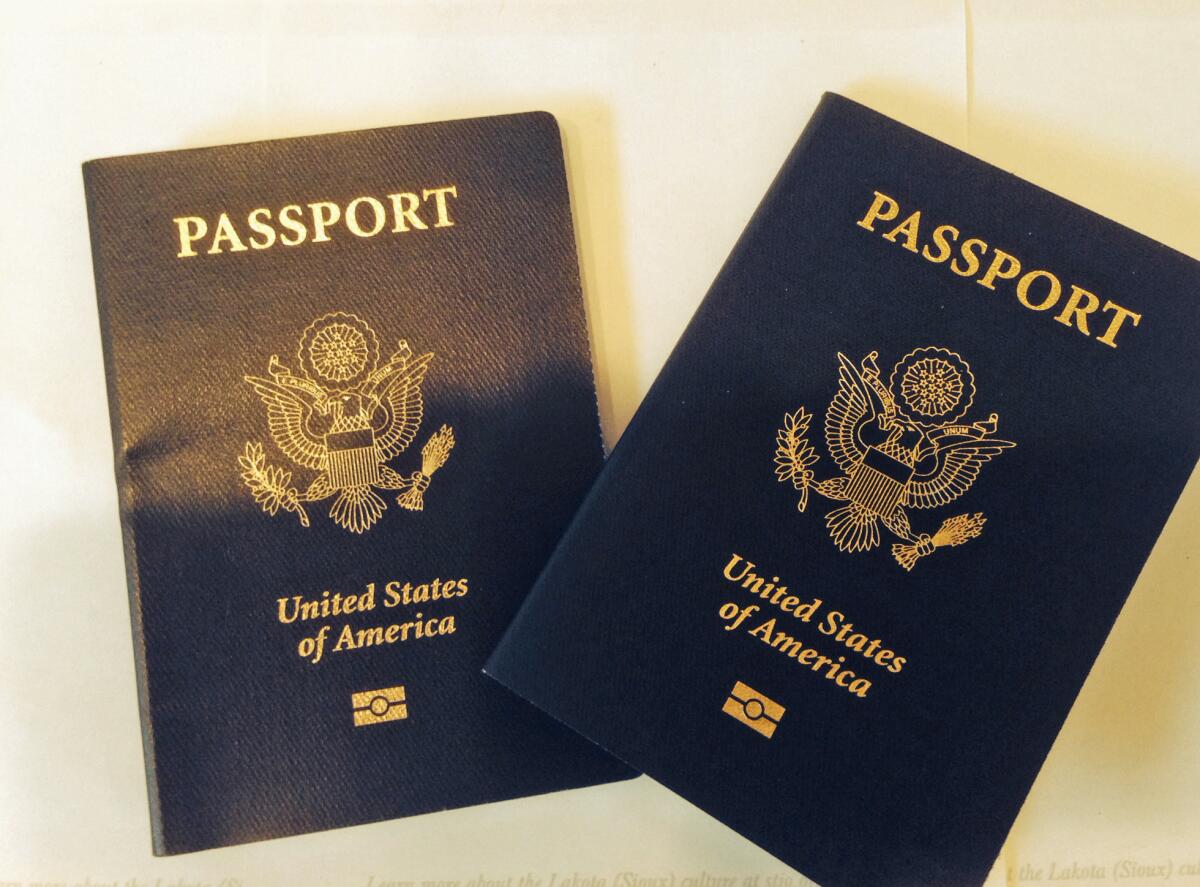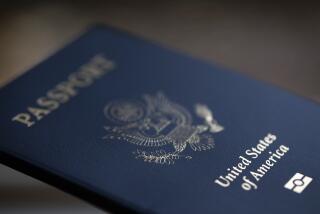For National Passport Awareness month, some info on 10-year rule

September is National Passport Awareness month, so this might be a good time to look at this gold standard of identification, especially if your book is 9 years old. But wait. Isn’t a passport good for 10? Yes. And no.
You’ve seen passports change over the years, and you’ll see them change again. But the most encouraging change is the government’s increased emphasis on the end user — those of us who travel. You may not believe that the words “customer service” and “U.S. government” can dwell within the same sentence, but the State Department’s handling of passports is giving me cause for hope, seven years after the Summer of our Passport Discontent.
Improvements since 2007, when applications seemed to disappear into a black hole? Yes. But the passport and the rules governing it aren’t simple. In some cases, thanks to other countries or new ways of doing business, those rules might catch you off-guard. Here’s some of what you need to know:
Passports used to be valid for 10 years — and they still are. (It’s five for children.) But increasingly, said Brenda Sprague, deputy assistant secretary for passport services, countries demand that your passport has at least six months on it before the expiration date, a growing issue in European countries. Your passport may be perfectly valid, but it may not be accepted. Her suggestion: “Once you pass the nine-year mark, it’s time to get a new passport.”
You used to be able to submit your passport application at just about any post office. Now not every post office accepts applications. Sometimes libraries do. Sometimes court clerks do. The best way to find out: iafdb.travel.state.gov.
Van Nuys now has a “mega” passport application center (15701 Sherman Way), which is part of a seven-facility pilot program that could be the wave of the future. You can submit your application, and you can also have your passport photo taken. It also has hours that may be more convenient for people who work: 11 a.m. to 7 p.m. Tuesdays through Fridays and 9 a.m. to 5 p.m. Saturdays. The new mega center in Santa Clarita (2801 Franklin Parkway) is open 10 a.m. to 6 p.m. Tuesdays through Fridays and 9 a.m. to 5 p.m. Saturdays. Look for a third center to open next month in Glendale at 313 E. Broadway; hours to be determined. (And of course, there is still the Los Angeles Passport Agency at 11000 Wilshire Blvd., Suite 1000.)
The days of passports with un-numbered pages are numbered. Sprague said the book’s pages had contained numbers at one time; that was stopped. Starting in 2016, pages will again be numbered so it will be easier to tell how many pages you have left. That’s important because some countries won’t accept passports that have fewer than four pages remaining. The bad news? Read on.
Starting in 2016, you won’t be able to add pages to your passport. People who travel a lot often run out of pages for visa stamps; pages could be added. But, Sprague said, “Nobody does [that] anymore. It is not state of the art; it is archaic.” The good news? Read on.
You can order a passport book that’s 52 pages (43 for visas) instead of the standard 28 (17 for visas), and it doesn’t cost extra. (It’s available now, by the way.) If you think you might need extra pages, you can ask for the bigger book, although the State Department website says that’s not guaranteed.
The 2016 model passport will contain a polycarbonate page in which your info chip is embedded and thus better protected, something many countries are doing, Sprague said. The coating helps if your book gets wet or you sit on it and bend it, she added.
Passport processing’s stated times are generally four to six weeks, but, Sprague said, “we consistently beat that.” About 20% of passport applications encounter problems, which means most do not. Since summer 2007, when a record 18.3 million passports were issued and applications moved more slowly than a slug in the sun, the number of passport adjudicators has doubled, she said, improving wait times. “Our goal is no missed trips,” she said — trips that aren’t missed because you don’t have your travel documents. (You’re on your own if you oversleep and miss your flight.)
Remember when it was the rare American who had a passport? In 2013, 117.4 million Americans had passports; in 1989, that number was 7.3 million. “The most important thing is when people need a passport, it shouldn’t be an ordeal,” she said. “People are entitled to travel internationally…. We want to open up the world.”
Have a travel dilemma? Write to [email protected]. We regret we cannot answer every inquiry.
More to Read
Sign up for The Wild
We’ll help you find the best places to hike, bike and run, as well as the perfect silent spots for meditation and yoga.
You may occasionally receive promotional content from the Los Angeles Times.






